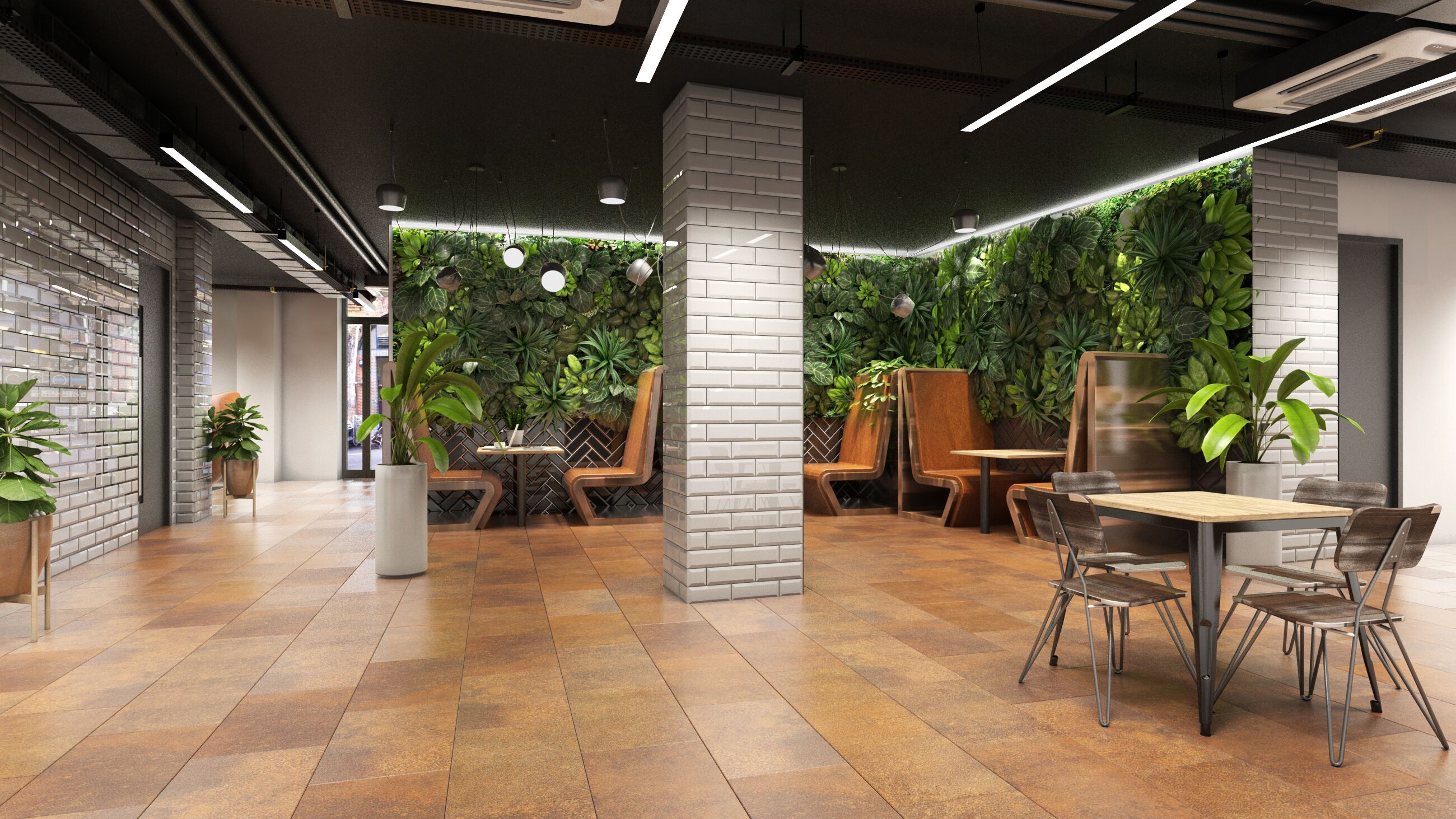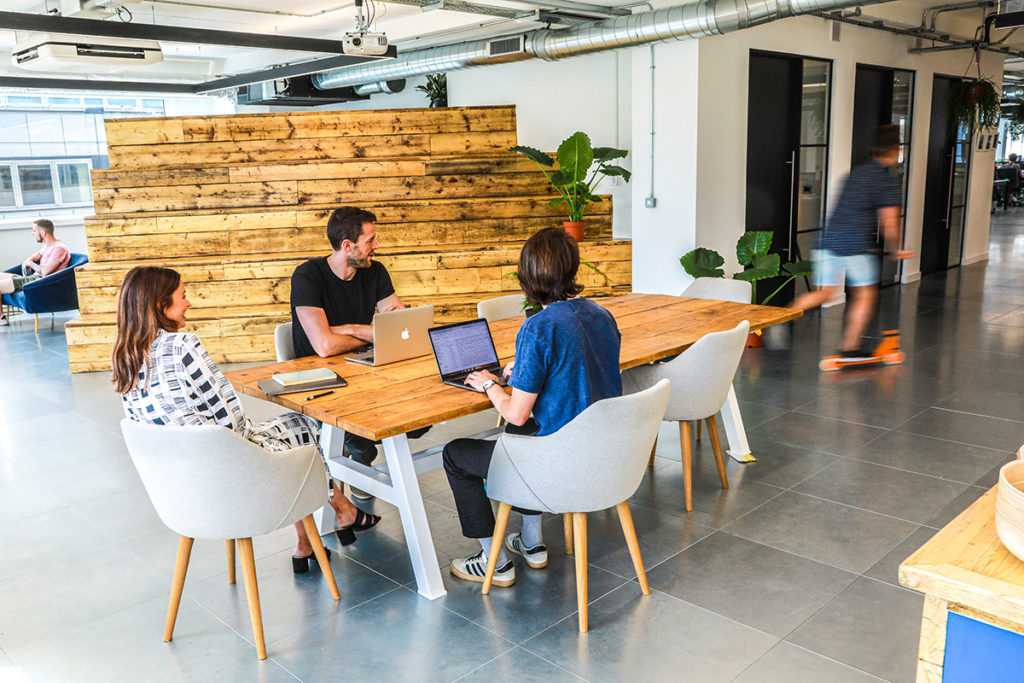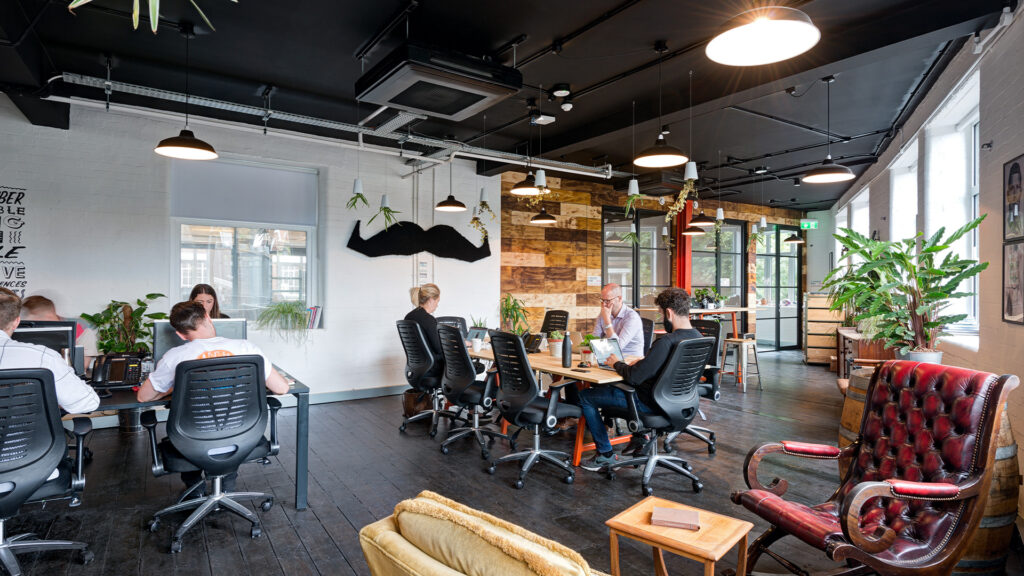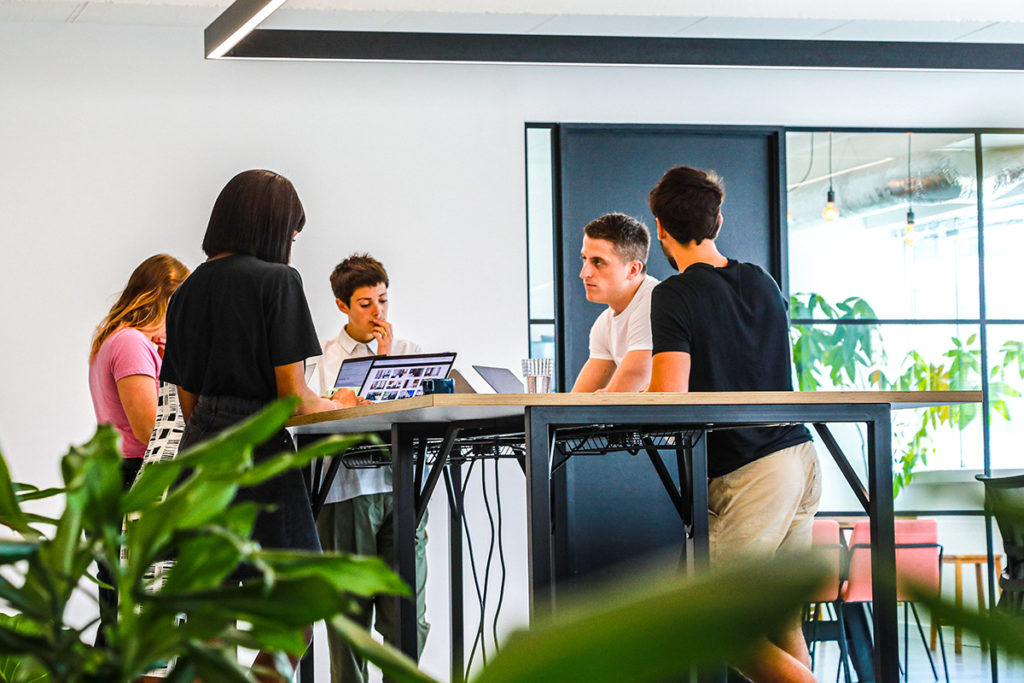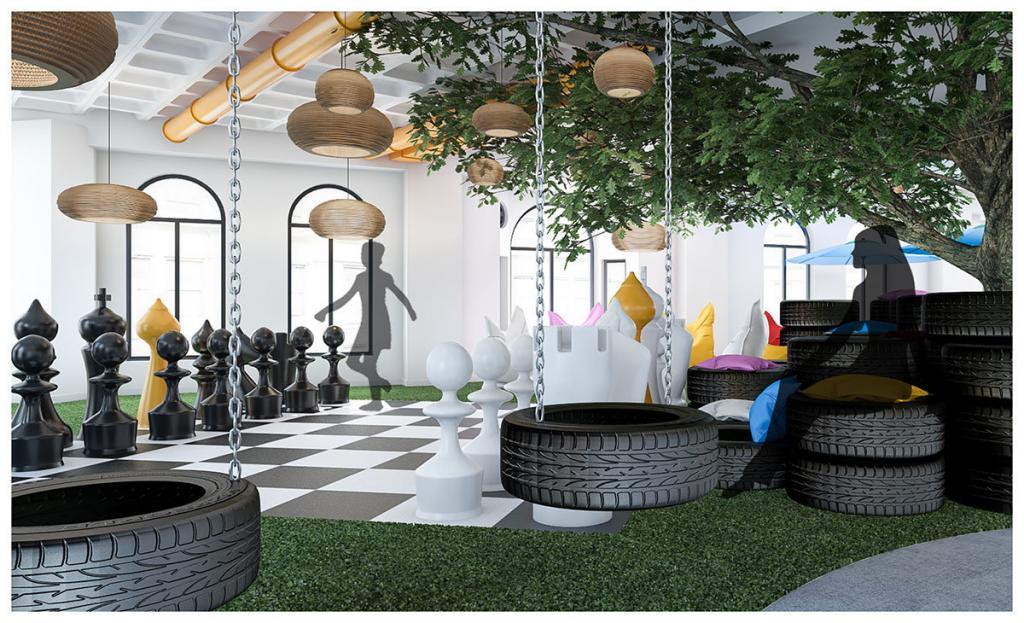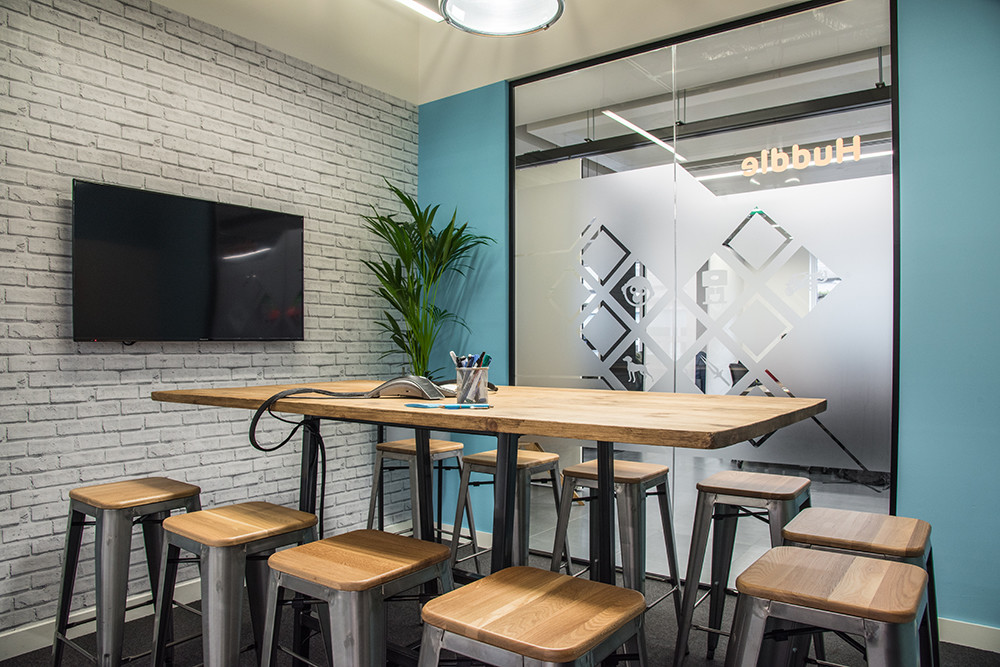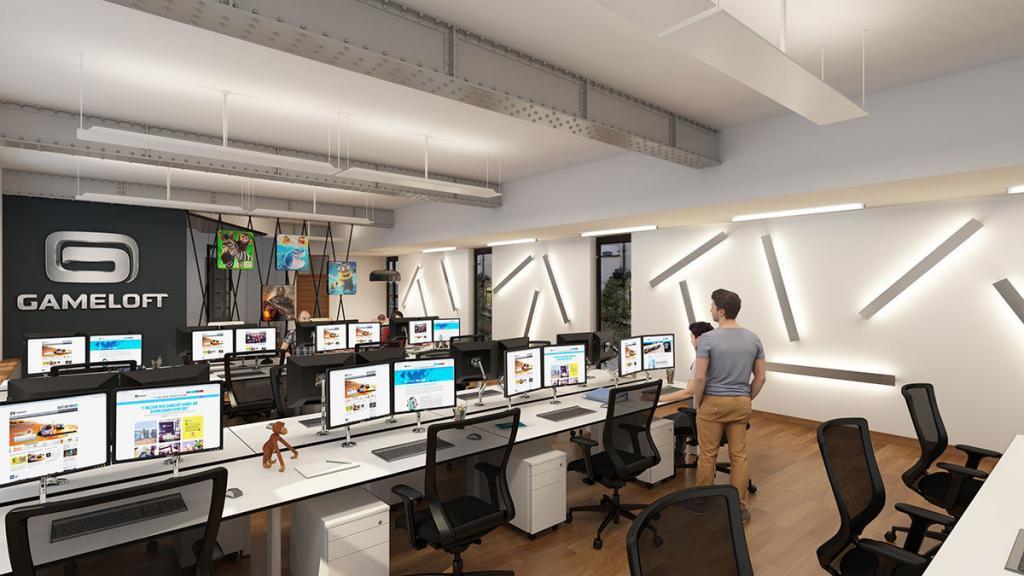Regularly doing things together, like pizza Fridays and after-work drinks in the pub, is nice and creates a good atmosphere, but it’s still the daily work environment that matters most. Both you and your employees spend a lot of time—so much time!—in the office. So it needs to keep your staff happy, healthy and zen amidst the chaos of office life.
Mindfulness, at its most boiled down, means paying attention to the current moment. It’s a way of waking up to the sounds, sights and sensations around you and recognising how you feel as a result. Instead of thinking about a gazillion things at once, which is pretty normal for most office workers, you focus on just one thing to achieve a sense of calm and focus. Hello infinite tranquillity!
But what does mindfulness mean to businesses? Why is it important and can we really design offices to promote it? Let’s take a look.

Does Mindfulness Have a Place in the Workplace?
The world of work is too darn noisy and distracting. Everything, repeat everything, demands your immediate attention. Emails, phone calls, Slack pings, interruptions, tech crashes, customer queries and deadlines, deadlines, deadlines—seriously, who has time to take five minutes out to do nothing?
You’re too busy! Too tired! Too stressed to sit there unpacking your mind!
But this attitude is why businesses need mindfulness more than ever before. We’re an always-on, running-on-empty bunch. Left unmanaged, stress can eat away those last energy reserves and leave us burned out and thoroughly cheesed off. That’s why relaxation is so essential. Even at its most basic level, mindfulness can:
- Reduce anxiety
- Improve strategies for coping with stress
- Boost your ability to work in high-pressure environments
- Improve decision-making
- Reduce negative thoughts (no, the printer is not out to get you)
- Make people much happier at work.]
And if you’re searching this list for the bottom-line benefits, know that there’s a proven correlation between employee well-being and productivity. Happy workers take less sick days and do better work for the business—which is why big hitters like Goldman Sachs, Google and Salesforce have started to practice mindfulness as part of their corporate wellness programs. Result!
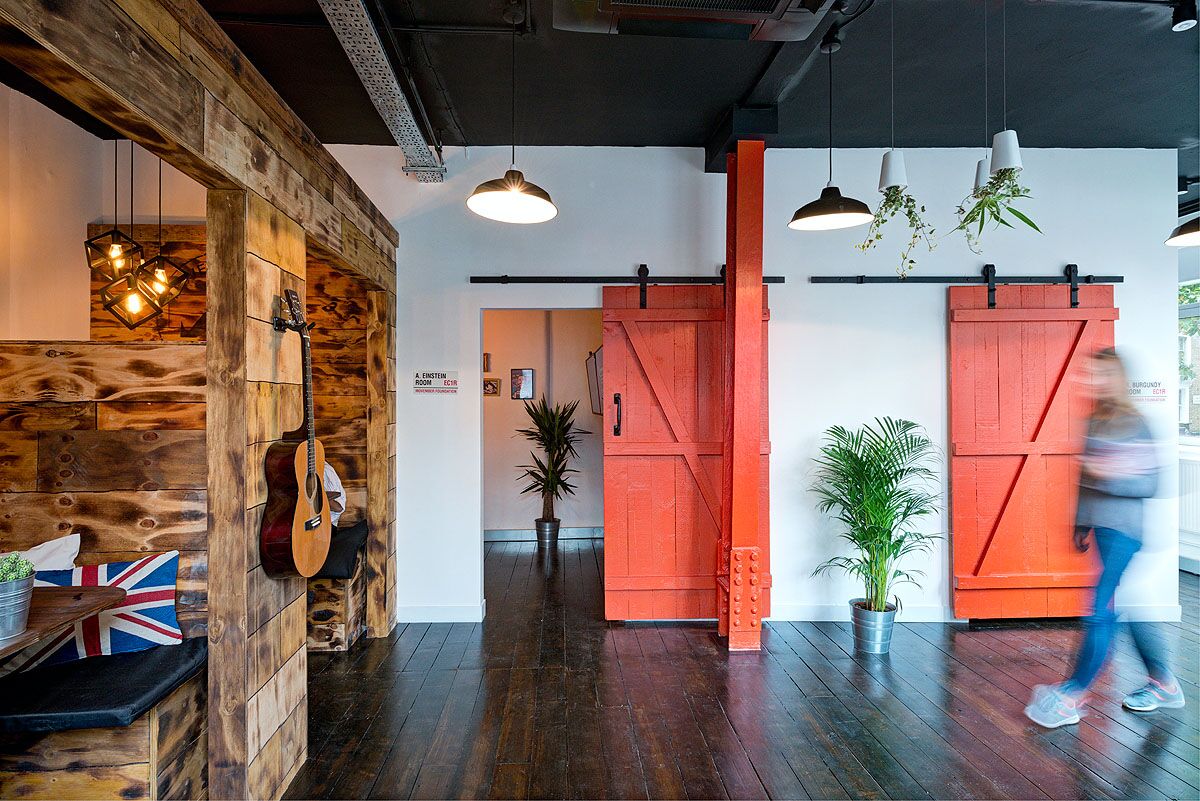
What’s Mindfulness Got to Do With Office Design?
The external environment is super-important to mindfulness, and everything from the arrangement of the furniture to how much light you’re letting in can make a massive difference to its therapeutic benefits. Here are some tips for incorporating mindfulness into your office design:
1. Say “no” to notifications
Let’s start with the obvious: it’s crucial to provide staff with a variety of spaces to work in—places for collaboration, places for quiet concentration and most important from a mindfulness perspective, places for relaxation. We’re big fans of creating “tech free zones” where staff can decompress, regroup and unwind without being interrupted by their inbox.
2. Let there be (natural) light
Blue light has a dark side, since constantly looking at screens all day can disrupt sleep patterns and make people feel antsy and sluggish. Natural light, on the other hand, helps people be more productive, happier and calmer. So it makes sense to look for ways to maximise daylight in the office. Windows, glass dividers and skylights are amazing for bringing the outside into the office. That’s one glass ceiling you won’t want to break!
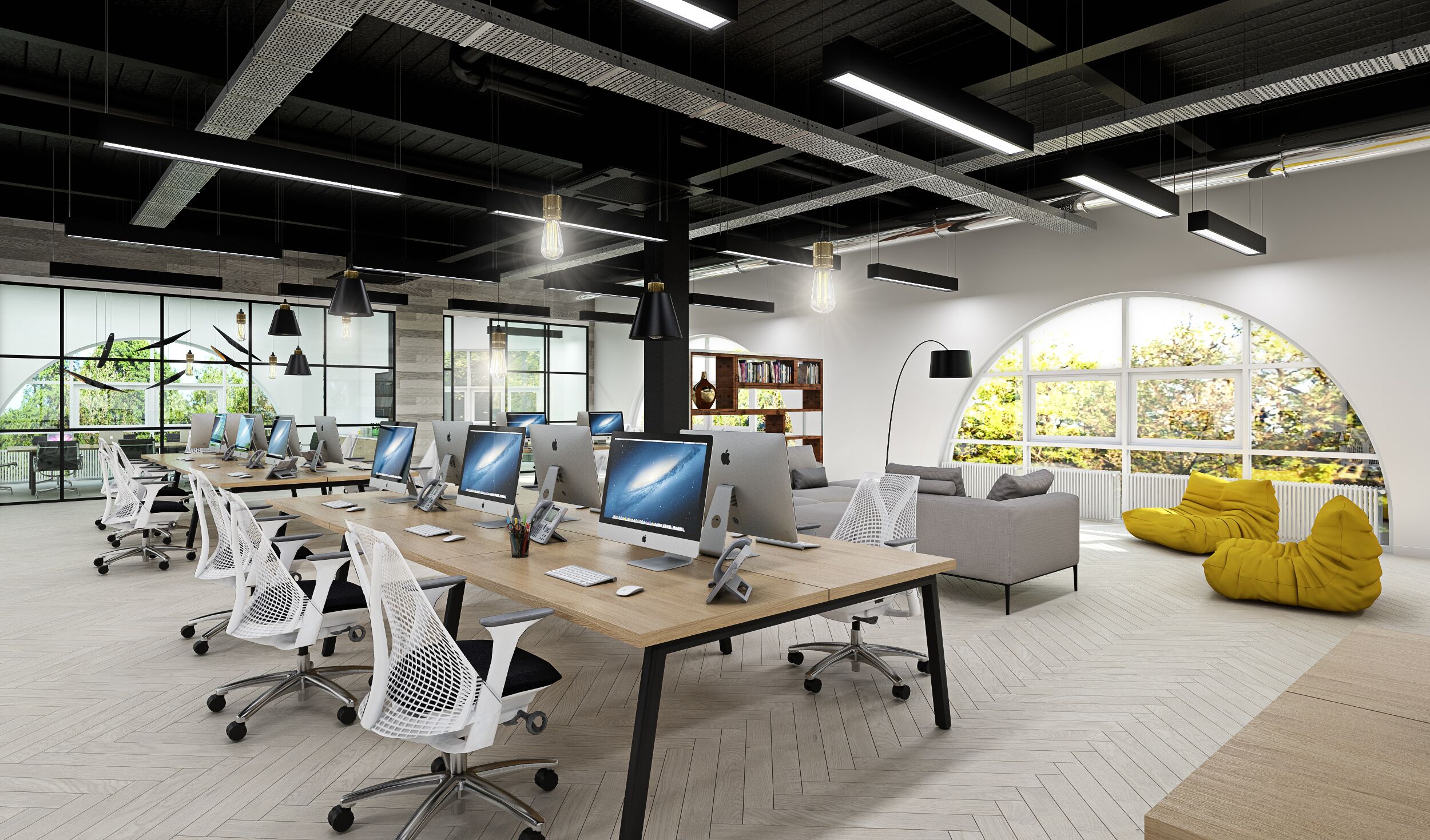
3. Get your meditation on
You may not have space for a dedicated yoga room, sleep pod or Jacuzzi, but even the smallest office can have a designated lounge area or quiet space away from the hustle and bustle. It’s as simple as throwing bean bags down and allowing employees to practice mindfulness in whatever capacity they see fit—from breathing to meditation to taking stock of how their body is feeling. Even an unused corner or meeting room will do.

4. Bring the outdoors in
Environment is everything in Zen philosophy, and choosing natural materials like wood, stone or green space can do wonders for your mindset. Living walls are a great way to bring the outside in but for those with a modest budget, DIY plant holders are just as impactful. And you can certainly play with light, patterns, colours, curves, water features—even gravity—to block visual distractions and dampen sound. Plants also leave a subtle scent that enhances the mindfulness process.
For sure, practising mindfulness won’t reduce your workload, cut the size of your inbox or get a demanding boss off your back. But it can make the difference between scuttling around on the hamster wheel and feeling just that little bit more, well, human. And if you were distracted in the course of reading this article, then it could be time to zen out your next office project with a little more mindfulness.
Now close your eyes, take a deep relaxing breath and ……get back to work!
